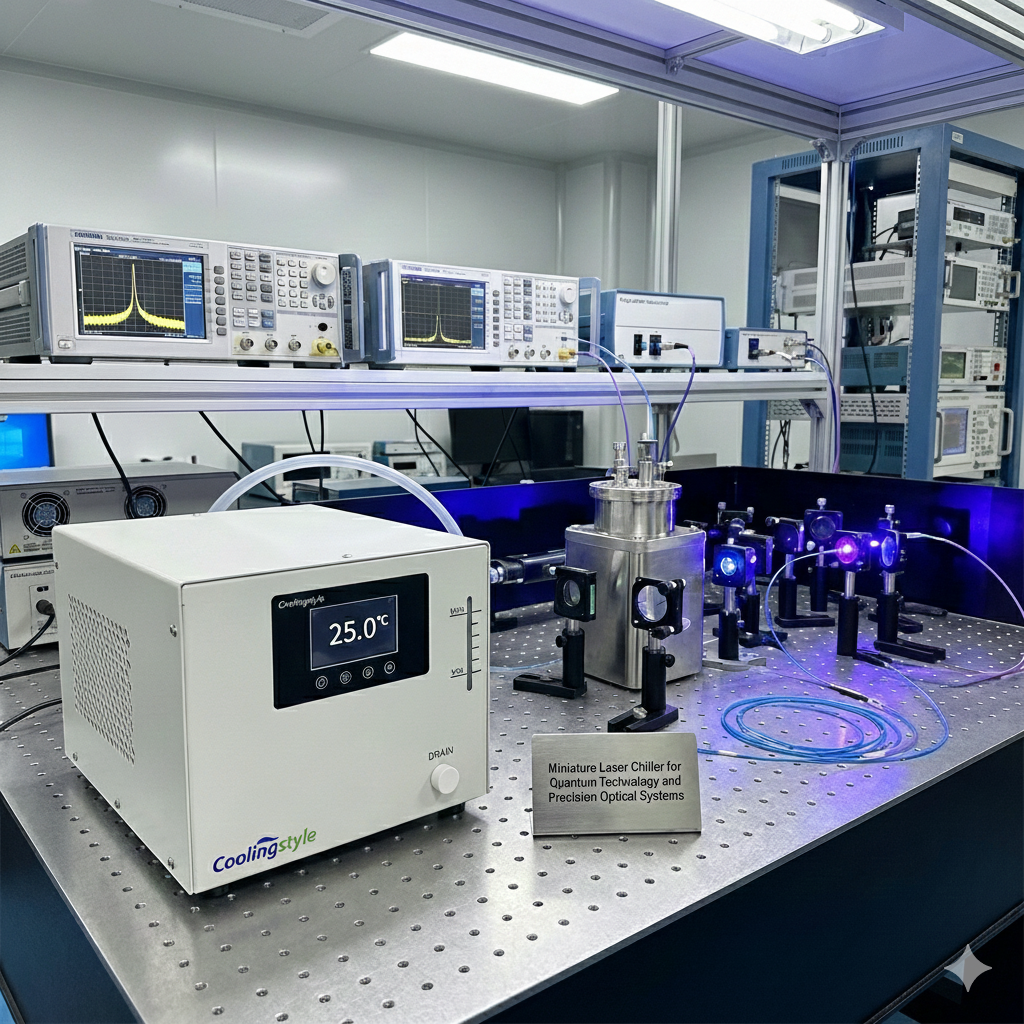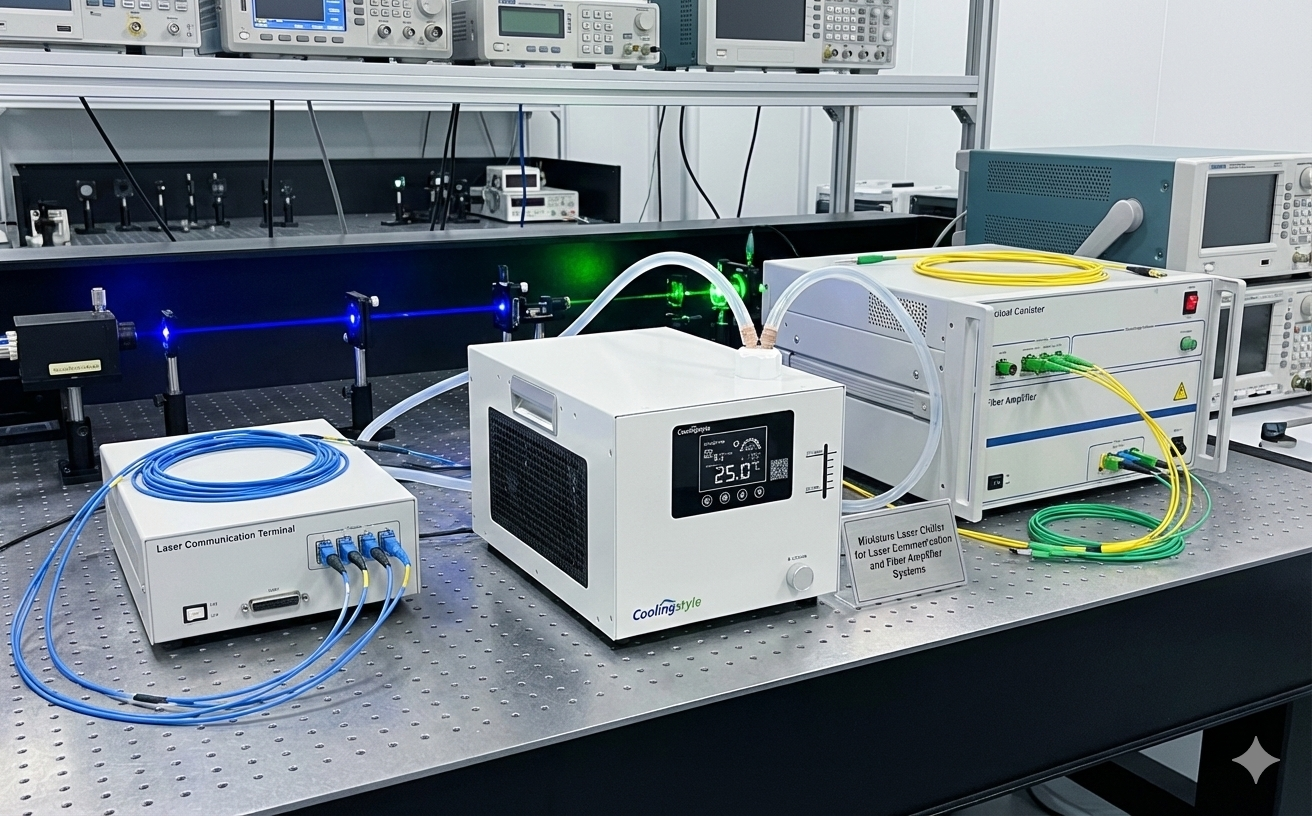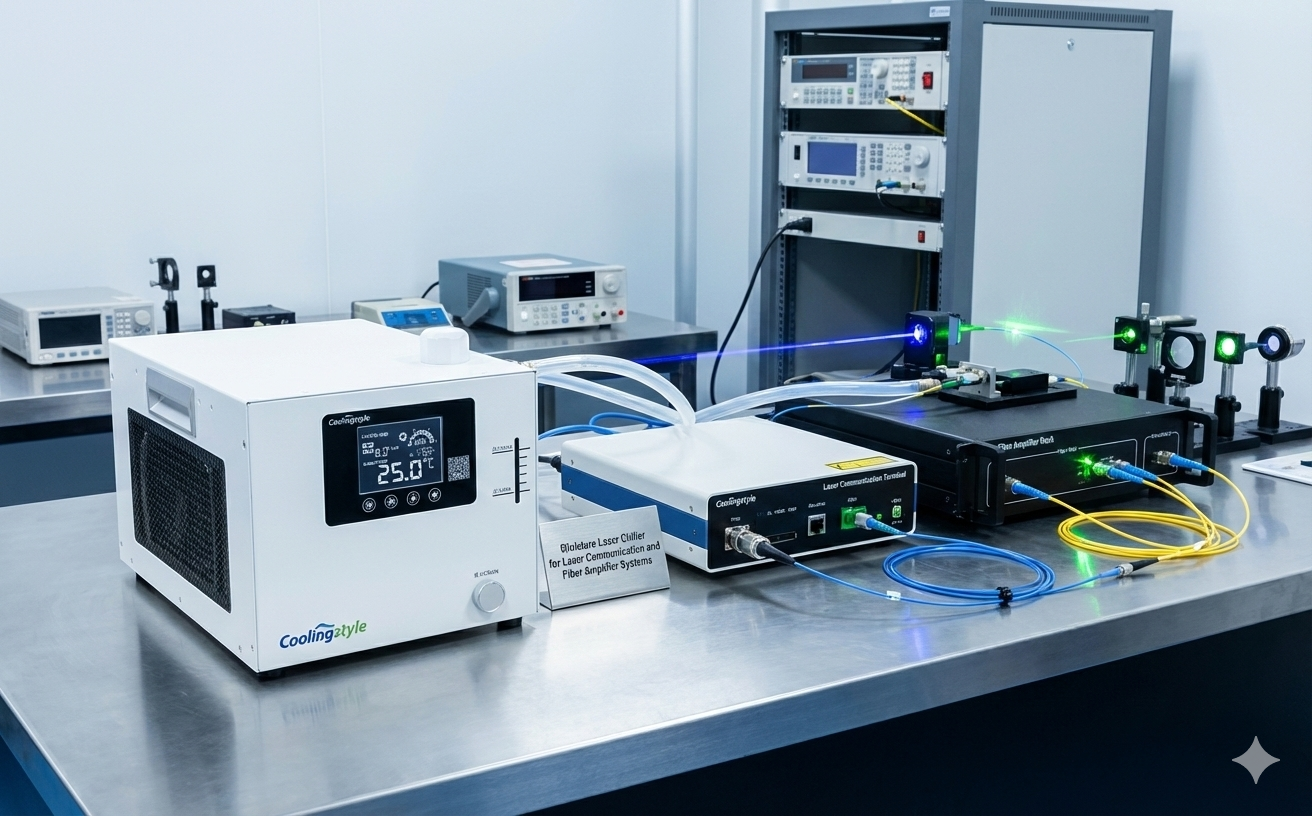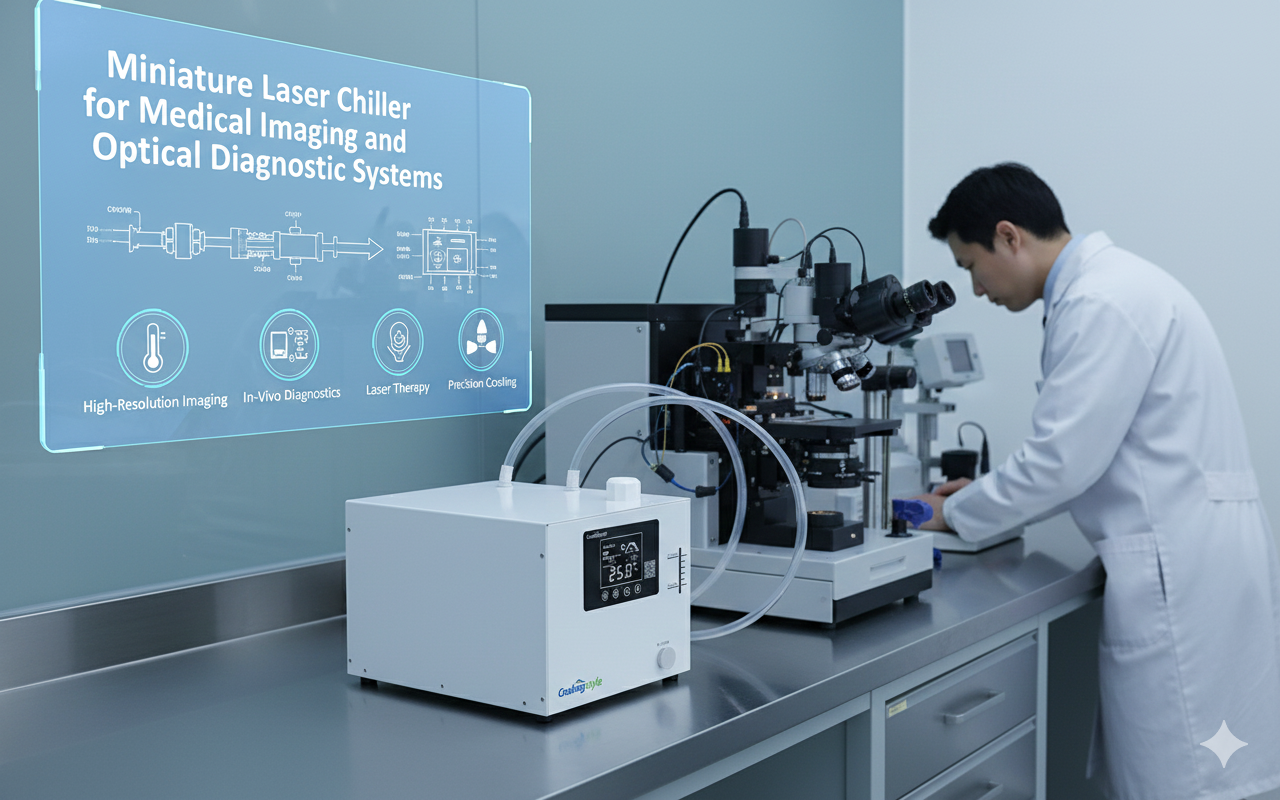Being invented in the 1960s, A laser is a device that emits light through a process of optical amplification. The laser’s ability to read, cut, mark and bind tough materials and etc. is widely used in many industries.
What Can Lasers Do?
- Consumer Industry: Since 1974, laser scanners have revolutionized retail by reading universal product codes (UPC), or barcodes.
- Manufacturing: Lasers are widely used for engraving, drilling, and marking a variety of materials with precision and speed.
- Medical Industry: In healthcare, lasers are employed for tissue removal, eye surgery, cosmetic procedures, and more.

Why Do Lasers Need Thermal Management?
The operation of lasers, especially industrial ones, generates significant heat that must be controlled to ensure efficiency and longevity. Here’s why thermal management is crucial:
- Prevent Poor-Quality Output: During operation, lasers use auxiliary gases (such as nitrogen, carbon monoxide, and helium) to convert electrical energy into coherent light. This process generates substantial heat that, if unmanaged, can degrade manufacturing outcomes.
- Eliminate Waste Heat: Higher-power laser diodes are particularly prone to field failures caused by excessive heat. Efficient heat removal prevents catastrophic damage and extends the laser’s lifespan.
- Maintain Accuracy: Overheating diminishes the precision of the laser beam, negatively impacting performance.
How to Apply Thermal Management for Lasers?
For high-power lasers like CO2, disk, diode, and fiber lasers, reliable and efficient cooling is essential for maintaining consistent performance, even during load fluctuations. Key components like resonators, optics, and laser heads require precise temperature control.
The most effective solution for laser heat management is the use of industrial chillers. A high-quality chiller ensures stable temperatures and minimal fluctuations, both at full and partial loads, enhancing laser performance.
How to Choose the Right Chiller for Laser Cooling?
To select the ideal chiller, several factors must be considered:
For example, a chiller with a 550W nominal cooling capacity at 20°C coolant and ambient air temperature can meet specific requirements.
- Cooling Capacity:
- A chiller must handle the laser’s heat load, expressed in watts or BTU/hr.
- Cooling capacity is defined by the nominal performance at specific conditions (e.g., 25°C coolant output and 25°C ambient air).
- For example, a chiller with a 550W nominal cooling capacity at 20°C coolant and ambient air temperature can meet specific requirements.

2. Coolant Type:
- The choice of coolant depends on the laser’s needs. Common options include tap water, water glycol, and deionized (DI) water.
- Tap Water: Often treated with additives like algaecide or ethylene glycol to prevent algae growth, corrosion, or freezing.
- Deionized Water: Requires DI-compatible materials and a deionization box to maintain resistivity levels, as it can be corrosive to many materials.
3. Pump Performance:
- The pump controls coolant flow rate and pressure. Positive displacement pumps ensure a consistent flow rate regardless of system pressure changes.
4. Additional Features:
- Coolant Filters: Prevent harmful particles from damaging the laser or pump.
- Communication Interfaces: RS-485 or similar connections allow remote monitoring and operation of the chiller. This enables adjustments to set temperature, coolant pressure, and fault conditions.
- Temperature Alarms: High/low temperature alarms protect the laser from damage due to coolant that is too hot or too cold.
- Low-Flow Alarms: Safeguards both the chiller and laser from frozen coolant.
Conclusion
Proper thermal management is critical for laser systems to maintain performance, prevent damage, and ensure a long service life. Industrial chillers are the cornerstone of effective cooling, offering precise temperature control, robust safety features, and compatibility with diverse cooling needs. By choosing the right chiller and coolant, laser systems can operate at their best, supporting high-precision and demanding applications with confidence.






2 thoughts on “The Essential Role of Thermal Management in Laser Applications”
Your style is so unique compared to other people I have read stuff from.
Thank youu for posting when you have the opportunity, Guess I’ll just book mark this web site.
Yay google is my world beater helped me to find this outstanding site! .